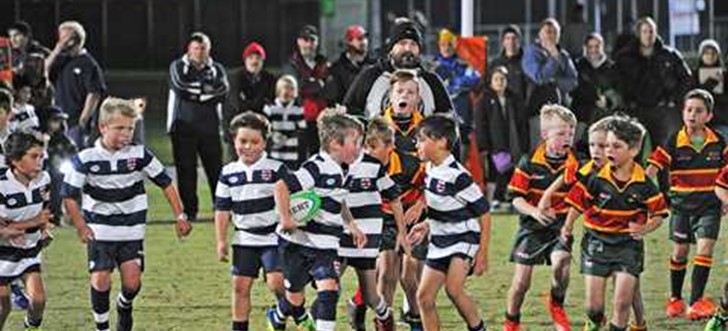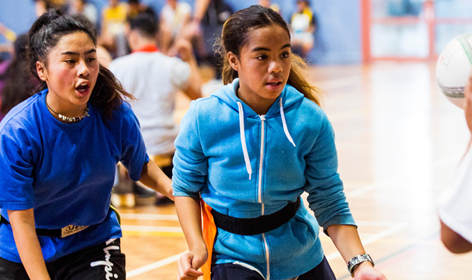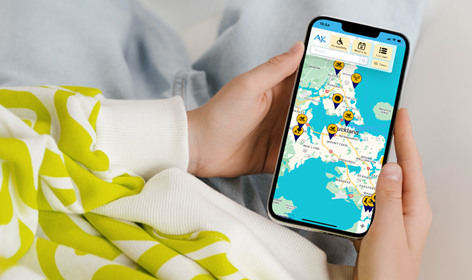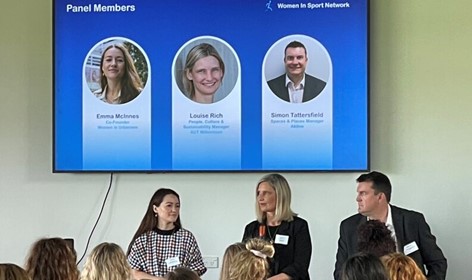Kick it, pass it, ride it – sport and recreation facilities SCORE!

“I am over the moon to see this level of support for the community. This demonstrates confidence in the future for the area as it grows and addresses the need for high quality well managed community facilities. Personally, I’ve been involved in advocating for this facility for over 10 years and it feels like a real achievement to get to this point.”
Mark Illingworth, long-time member and current President of Mahu Community Sport and Recreation.
Auckland Council’s Parks, Arts, Community and Events Committee today approved applications totalling more than $9.9 million from the Sport and Recreation Facility Investment Fund.
Councillor Alf Filipaina, chair of the PACE Committee, explained that the fund was established to support the development of regional and sub-regional sport and recreation facilities that enable Aucklanders to be more active more often.
“We all know the physical benefits of sport and recreation,” says Councillor Filipaina.
“And in these trying times, we must continue to encourage participation in sport and recreation. The funding we have allocated today supports a Tāmaki Makaurau where everyone has an opportunity to stay active and improve their physical and overall well-being.”
Mayor Phil Goff says that grassroots community sport and recreation is highly valued by Aucklanders and helps people stay fit, healthy, active and in touch with their communities.
“Despite the severe financial challenges Auckland Council faces as a result of COVID-19, I’m pleased that we are able to continue to provide this funding, which includes almost $6 million to upgrade council-owned sports fields so that more people can use them throughout the year,” says Mayor Goff.
“A further $4 million will enable upgrades to rugby and other sports fields, as well as future development of indoor netball and multisport facilities, and walking and mountain biking tracks.”
Councillor Filipaina says the plan is to build a programme of projects that are at varying stages of development
“This is to ensure sufficient investment is available for priority projects in the year that it is needed,” he explains.
“The fourteen projects that received funding today are a combination of community-led and council-led initiatives, all focussed on addressing gaps in provision and enabling us to proactively respond to Aucklander’s changing sport and recreation preferences.”
Community profile – Multi-sport indoor facility and the Mahu Community Sport and Recreation Collective
Gerard van Tilborg, Chair of the Mahu Community Sport and Recreation Collective Board says that the Mahurangi community continues to grow rapidly and that there is an increased demand for additional recreational space, as well as more appetite for indoor sports and activities. He describes the funding support as ‘significant’ and says that it demonstrates the support of Auckland Council for the community and continued investment into health and wellbeing through sport and recreation in the area.
“We are absolutely delighted,” says Mr van Tilborg.
“A multisport indoor facility at Warkworth Showgrounds will take sport and recreation in the Mahurangi area to the next level. With the support of Auckland Council and the community we have already developed fantastic outdoor facilities at the showgrounds, and adding a multi-use, flexible indoor facility will truly round out this key community hub; now made up of 12 different sports clubs and rapidly growing playing membership of more than 3000.”
A full list of community organisations and projects that were approved for funding today is provided in the following table.
| Organisation | Project | Type | Location | Funding |
| Mahu Community Sport and Rec Collective | Multi-sport indoor facility | Capital development | Rodney | $2,250,000 |
| Auckland Netball Centre Inc | Geotech analysis and business case | Investigation
|
Orakei | $190,000 |
| Kolmar Charitable Trust | Indoor court options analysis and feasibility | Investigation
|
Ōtara-Papatoetoe | $80,000 |
| North Shore Rowing Club | Boat storage design | Design
|
Upper Harbour | $32,500 |
| Auckland Rugby Union | Sports field upgrades across three parks | Investigation & Design | Henderson-Massey, Franklin and Upper Harbour | $150,000 |
| Matakana Coast Trail Trust | 100km walking trail | Investigation and Design | Rodney | $500,000 |
| Howick Bowling Club | Two covered greens | Capital development | Howick | $350,000 |
| The Woodhill Sands Trust | Competition surface, toilets and health and safety mitigation | Capital development | Rodney | $372,000 |
| Pohutukawa Coast Bike Club | Mountain bike track development/ upgrade | Capital development | Franklin | $109,440 |
| Auckland Downhill Club | Mountain bike track development /upgrade | Capital development | Rodney | $150,000 |
| West Coast Riders Club | Mountain bike track development/ upgrade | Capital development | Rodney | $50,000 |
| Total | $4,233,940 |
Council-led projects to receive funding
Expressions of Interest were received from a number of community groups seeking upgrades to the council-owned sport and recreation facilities they use to deliver their activities.
A parks, sport and recreation sports field supply and demand analysis highlighted Mangere, Papatoetoe and Manurewa as the areas of Tāmaki Makaurau in greatest need of investment to address training needs for winter-based sports.
In response to this, funding was today approved to improve field quality and lighting that will reduce the number of weather-related cancellations and create additional sports field training capacity.
Barry George, General Manager of Kolmar Charitable Trust, says that receiving funding from the council is a game changer for the Trust who manage the multisport facility at the Papatoetoe Recreation Grounds.
“This investment is a huge win for the Papatoetoe and Otara residents who also attend community events at the grounds. In addition, the grounds are the home to the Papatoetoe Rugby and Papatoetoe United Football Clubs with membership across these clubs at 950 playing members,” says Mr George.
“Official ground use numbers for 2019 were 58,000, although the fields accommodate that again in unofficial use. With the fields currently being soil-based, the usage throughout winters is drastically affected by closures due to lack of drainage turning them into muddy quagmires. The improved field capacity will allow greater hours of training and play on higher-quality surfaces for youth and senior club players alike.”
The following projects will be council-led, as the council is the landowner and will carry out associated maintenance of the upgraded facilities.
| Park | Type | Location | Funding |
| Māngere Centre Park | Design and capital development | Mangere-Otahuhu | $2,000,000 |
| Papatoetoe Recreation Ground | Design and capital development | Otara-Papatoetoe | $1,900,000 |
| Mountfort Park | Design and capital development | Manurewa | $1,800,000 |
| Total | $5,700,000 |
What are the priorities for funding?
The fund prioritises investment into community sport facility development projects over $500,000 and in partnerships that can leverage additional investment.
The council’s General Manager of Sports, Parks and Recreation, Mace Ward, says that the projects were assessed in the context of the Increasing Aucklanders’ Participation in Sport: Investment Plan 2019-2039 and four investment principles:
- Equity: ensures equity of outcomes across the population regardless of age, gender, ethnicity, socio-economic status or location.
- Outcome-focused: there is a clear ‘line of sight’ between the investment and the outcomes it delivers.
- Financial sustainability: projects need to be financially viable and affordable for the public.
- Accountability: investment should be efficient, effective, transparent and consistent.
Mr Ward also noted that ‘deliverability’ was an additional consideration when funding was being considered.
“This included the organisations ability to secure additional capital development funding, the complexity of project delivery and the capability of the team delivering the project,” explains Mr Ward.
“We know that council often plays an important role by providing cornerstone funding for capital development projects, from which communities can leverage the additional funding required to get their projects over the line. This partnership approach enables us to achieve more together than working alone and we believe the organisations allocated funding today can and will deliver important projects that help get their communities active.”





